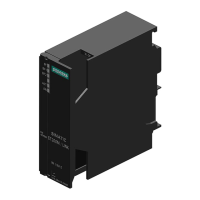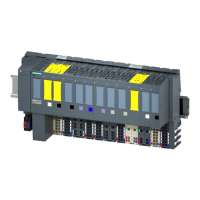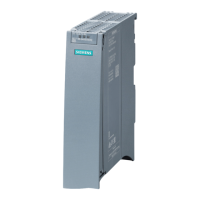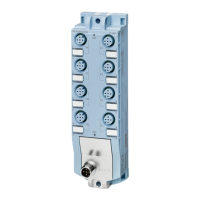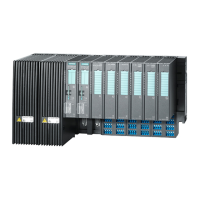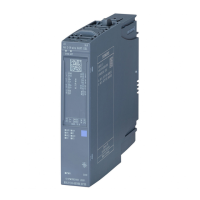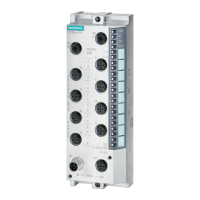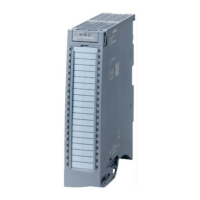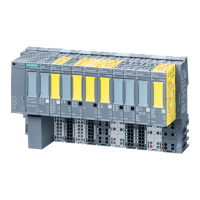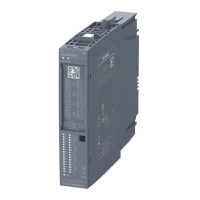Detailed information on DP slave diagnostics can be found in the SIMATIC Manual titled
ET 200S Distributed I/O System
.
Alarm evaluation
Alarms sent by the I/O are evaluated in the PeripheralFaultTask. When the
PeripheralFaultTask is started, the Taskstartinfo is made available; you must evaluate this in
the user program. To do this, assign a program to the PeripheralFaultTask in the execution
system (see sample program Unit_E_FC_ctr).
The Taskstartinfo of PeripheralFaultTask is comparable to the local data of OB 82 in the
SIMATIC system.
Table 6-1 Meaning of the Taskstartinfo
Task TSI Meaning
PeripheralFaultTask DT TSI#startTime Start time of the task
UDINT TSI#interruptID Identifies the triggering event:
● _SC_PROCESS_INTERRUPT
● _SC_DIAGNOSTIC_INTERRUPT
● _SC_STATION_DISCONNECTED
● _SC_STATION_RECONNECTED
DINT TSI#logBaseAdrIn Logical start address if a hardware interrupt (PRAL) or a diagnostic
interrupt (DAL) was caused by an input range on the module, oth‐
erwise _SC_INVALID_ADDRESS
DINT TSI#logBaseAdrOut Logical start address if a hardware interrupt (PRAL) or a diagnostic
interrupt (DAL) was caused by an output range on the module, oth‐
erwise _SC_INVALID_ADDRESS
DINT TSI#logDiagAdr Diagnostic address of a DP slave if the interrupt was caused by a
CPU stop or recovery of the associated DP slave, otherwise
_SC_INVALID_ADDRESS
DWORD TSI#details Detail information (bit fields)
6.2 Diagnostic alarms
Diagnostic alarms enable operational messages (hardware faults) of the ET 200S FC to be
detected in the SIMOTION device.
Definition of a diagnostic alarm
If the user program is to respond to an internal or external error, you can set the parameters
for a diagnostic alarm that will interrupt program execution in the SIMOTION device.
Events that trigger a diagnostic alarm
The criteria (events) for triggering diagnostic alarms in a SIMOTION system correspond to
those in a SIMATIC system.
Alarm processing
6.2 Diagnostic alarms
Supplement for the ET 200S frequency converter
34 Function Manual, 01/2015

